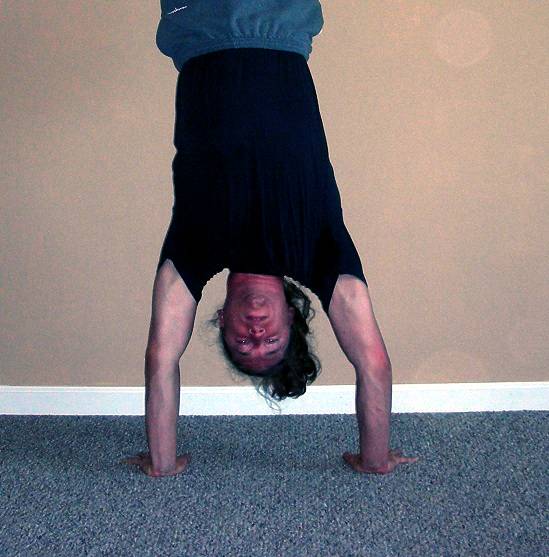Emotional Freedom Technique (EFT) can be a phenomenal tool to help you overcome injuries. Sometimes it’s simply our emotional pain that keeps our physical pain present.
Sound crazy? Consider that pain and injury are not static things. They change all the time. Even if you have chronic pain, there are times when it’s better and times when it’s worse. And if that’s the case, then there is perhaps an opportunity to get to a place where sometimes there is pain and sometimes there is no pain. And once you are there, the possibility arises of having your pain disappear completely.
If you haven’t read my previous EFT articles, click here to learn about the science behind EFT and here to learn the basics of tapping.
A Case Study on Wrist Pain
Tapping is at the heart of EFT and is best used to target the mental and emotional issues surrounding an injury. There will be sometimes, though, when you can go directly for the physical component itself.
My first experience using EFT on an injury involved my wrist. Back in high school, I injured my right wrist while playing football. I had a specially made cast I wore that wouldn’t allow my wrist to bend back more than 45 degrees. Of course, this impacted my playing, but less so that the intense shooting pain that would occur otherwise.
Years later, I was working on my handstands and this chronic wrist issue was in my way. In a handstand, your wrist is bent back approximately ninety degrees and must support your entire body weight. Because of the pain in my right wrist, I was forced to lean to my left side. Not the best way to hold a stable handstand. So progress further along in my hand-balancing skills just wasn’t happening.

I had tried regularly stretching, which certainly made it better, but the pain and stiffness was still there. So, as typically happens before a big change, I got fed up and swore to myself that I would fix it.
I threw everything and the kitchen sink at the problem. This included energy psychology, to which I had only recently been introduced. I used tapping while I addressed the emotional issues surrounding my chronic injury, as well as those of the first cause (more on those in a minute).
I did this in combination with stretching, mobility drills, some other mental training, and applying topical liniments to the area. In the end I called it “fixed” when I was able to do a one-handed handstand, against the wall, on my formerly injured right hand. This all happened within a span of a few weeks.
To this day, that wrist still not as flexible as my left, but there hasn’t been any pain in about five years now.
EFT in Action: Watch and Learn
Intrigued about how to actually perform EFT? A great way to learn is just by watching and imitating a person, so I‘ve included a video here:
Pain Free in Thirty Minutes
Just recently, I did some work with a woman on her shoulder pain. Her pain had existed for several years following an injury while playing basketball, which was further hurt during subsequent car accidents. After a half-hour EFT session, her pain was 100% gone, and has never returned.
I’m always amazed when the technique works this well and happy to have helped the person in this way. Sometimes it really is just the emotional pain that keeps the physical pain there. Unfortunately, it doesn’t always work like this. More often then not, it is best to accompany the tapping with other physical solutions, like I did with my wrist.
Remove Blocks to Healing
If you have a pain or injury that isn’t healing, then something has gone wrong wrong. It is natural for the body to heal. You can probably think of many instances where an injury did heal properly and you got better as the body put itself back together naturally and over time.
But this isn’t always the case. Why? For whatever reason the body may get signals – from beliefs, additional physical or emotional trauma, and all manner of thoughts and feelings – that direct the body not to heal and impairing that process in some way. Then after time, this becomes a habit in the body and thus the lack of healing can stick around forever.
Every single cell in the human body gets replaced over time. Blood cells come and go in a few days’ time. Bone cells, which stay the longest, are still changed out about every seven years. Yet a chronic injury can stick around longer than any of the cells that were there originally. Therefore, something must be keeping it in place.
So when you remove that “something,” the body’s natural healing methods can work once again. This can be backed up by conscious decisions you make to support that healing even further. There are a few methods in EFT that work to do this.

Chasing the Pain
In the chasing the pain technique you’re going after the pain specifically. Sometimes this doesn’t even involve your emotions, although other times they get brought up. Case in point: one woman I worked started with a complaint of an upset stomach that, by chasing the pain, we discovered was linked to her stifled creativity.
To use the chasing the pain technique, you must become hyper-specific about how you feel the pain (or tightness, pressure, etc. that you feel). This means that the pain must be present at this time.
Ask yourself the following questions about your pain:
- What are the qualities of it?
- Is it a sharp pain? Or dull?
- Does it come on quickly and then go away or is it always present?
- What area does it cover? A big area or a specific location?
- Is it always in the same place or does it move?
- Is there a temperature sensation (hot or cold) associated with it?
- If it’s not pain, but a pressure, how does that feel?
- What is the intensity of it? (on a zero-to-ten scale)
As you do your tapping sequence, you’ll verbalize those specific qualities. Its called chasing the pain because after a round or two, more often than not, the quality of the pain will change. Then you chase it, finding and identifying the new qualities and continuing to tap. Sometimes you’re able to chase it right outside the body.
Tap on Emotions for Best Success
This is a great for the physical aspects of pain, but as I mentioned, you’ll mostly want to tap on the emotional aspects for the best success. To work on the emotional issues surrounding an injury, there are two main places to look – the present and the past.
What are your current feelings regarding the pain? Do you feel like its hopeless? Are you angry? Does it make you feel depressed? Tap away the negative feelings.

And typically, it’s even more important is to work on the emotional trauma that most likely began with the physical trauma. The two almost always go together. Think back to when you first hurt yourself and tap through the emotions of that event.
Some typical emotions involving injuries are:
- Anger at others
- Anger at yourself
- Shock and surprise
- Embarrassment
- Feeling stupid
- Sadness
- Loss or grief, if the injury led to loss of important opportunities
As usual, when you go through these incidents and the surrounding emotions, more may come up. When you tap on the fact that you felt stupid for hurting yourself, you may uncover your anger towards those who could have stopped it. Sometimes there are multiple events and emotions that must be worked through.
Also keep in mind that some other important areas to look at are safety issues you may have in regards to the future. For instance, “If I get better, I’ll just hurt myself again.”
Get Better and Faster Results
Working through this emotional and physical healing process may take some time, but it can’t hurt. Since the psychological component is what is most often left out of any physical therapy approach, I feel that by adding this EFT technique to your healing regimen, you’re sure to get better, faster, and more complete results.
Photos 1, 3, & 4 courtesy of Shutterstock.






